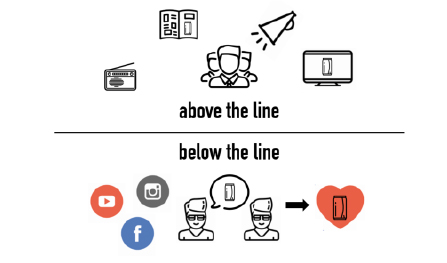A complete guide to Marketing Mix Modeling
The singular aim driving all marketing initiatives is to maximise the ROI on the production, sales and distribution of a certain product or service. Effective marketing can therefore be defined as having the right product at the right time at the right place and available at the right price. The concept of a marketing mix strategy, was first proposed in 1960 by marketing expert Edmund Jerome McCarthy. The marketing mix elements can be broken down into:
Product
A product can be either a tangible product or an intangible service that meets a specific customer need or demand.
Price
Price is the actual amount the customer is expected to pay for the product.
Promotion
Promotion includes marketing communication strategies like advertising, offers, public relations, etc.
Place
Place refers to where a company sells their product and how it delivers the product to the market.
The importance of developing a marketing mix lies in the fact that the success or failure of a product or service in the market can also be traced back to how accurate and efficient its marketing mix was. Here is a complete guide to everything your company needs to know about the importance of creating a marketing mix and how to develop a winning marketing mix strategy for your product in 2020.

What is Marketing Mix Modeling?
An accurate marketing mix model can be the difference between the success or failure of a product!
Marketing Mix Modeling definition
The key purpose of a Marketing Mix Model is to understand how various marketing activities are driving the business metrics of a product. It is used as a decision-making tool by brands to estimate the effectiveness of various marketing initiatives in increasing Return on Investment (RoI).
How does a Marketing Mix Model work?
Marketing Mix modeling breaks down business metrics to differentiate between contributions from marketing and promotional activities (incremental drivers) vs. other (base) drivers. These factors affecting marketing mix can be defined as:
Incremental drivers: Business outcomes generated by marketing activities like TV and print ads, digital spends, price discounts, promotions, social outreach, etc.
Base drivers: Base outcome is achieved without any advertisements. It is due to brand equity built over the years. Base outcomes are usually fixed unless there are any economic or environmental changes.
Other drivers: They are a sub-component of baseline factors and are measured as the brand value accumulated over a certain time period due to long-term impact of marketing activities.
Importance of Marketing Mix Modeling
Marketing Mix modeling offers several important benefits for marketers:

1. Better allocation of marketing budgets
This tool can be used to identify the most suitable marketing channel (Eg. TV, online, print, radio, etc.) to achieve the marketing objectives and get maximum returns.

2. Better execution of ad campaigns
Through MMM, markets can suggest optimal spend levels in highly effective marketing channels to avoid saturation.

3. Business scenario testing
MMM can be used to forecast business metrics based on planned marketing activities and then simulate various business scenarios like increase in spends by 10%, level of spends required to achieve 10% lift in business metric etc.

Impact of variables on marketing mix models
Developing an accurate forecast for sales is only possible by taking into account these main variables.
Marketing mix elements are broken down into three variables: incremental, base and other. These three categories are further subdivided into a range of factors that can influence the market performance of a product or service. Understanding each of these variables is crucial for marketers to make an accurate forecast of the effects of promotional activities and product distribution.
Base variables
The baseline is any impact achieved independent of marketing mix variables. They are influenced by various factors like brand value, seasonality and other non-marketing factors like GDP, growth rate, consumer sentiment, etc. Determining the baseline outcomes is critical to understand the impact marketing activities are having on a product’s performance and a product’s distribution.
Some of the base variables include:

1. Price: The price is a very significant factor in determining the other elements of the marketing mix strategy. Price determines the target consumer group as well as the strategy for advertising, promotion and distribution.
The pricing model is one of the key factors affecting marketing mix because:
- Pricing communicates the value of the product to the customers and can have direct impact on business performance
- Impact on pricing depends on the elasticity of the product

2. Distribution: In Marketing Mix Modeling, distribution refers to the number of stores or locations where the product is available, number of stock keeping units (assortment) and shelf life (velocity). The distribution strategy is influenced by the market structure, the firm’s’ objectives, its resources and of course, its overall marketing strategy.
Distribution of a product is key because:
- Strong product distribution chain coupled with targeted marketing activities directly results in effective business outcome.
- Strong assortment for a product enables consumers to have multiple options to actively research and purchase.

3. Seasonality: Seasonality refers to variations that occur in a periodic manner. Seasonal opportunities are enormous, and often they are the most commercially critical times of the year. For example, major share of electronics sales are around the holiday season.

4. Macro-economic variables: Macro-economic factors greatly influence businesses and hence, their marketing strategies. Understanding of macro factors like GDP, unemployment rate, purchase power, growth rate, inflation and consumer sentiment is very critical as these factors are not under the control of businesses but substantially impact them.
Incremental variables
All marketing mix elements can be broadly classified under three categories:

1. ATL (Above-the-Line) marketing: Above-the-line advertising consists of advertising activities that are largely non-targeted and have a wide reach. The primary objective of ATL activities is to help in brand building and to create consumer awareness and familiarity.
Examples of ATL marketing include television advertising, radio advertising, print advertisements (magazine and newspaper), and product placements (cinema and theatres).
Advantages of above-the-line marketing:
- Tailored to reach a massive audience
- Great for creating awareness
- Long-term brand building
2. BTL (Below-the-Line) marketing: Below-the-line advertising consists of very specific, memorable and direct advertising activities focused on targeted groups of consumers. Often known as direct marketing strategies, below-the-line strategies focus more on conversions than on building the brand.
Examples of BTL activities include sales promotions, discounts, social media marketing, direct mail marketing campaigns, in-store marketing, events and conferences.
Advantages of below-the-line marketing
- Specifically targeted towards individual customers
- Drives immediate impact
- Helps measure campaign effectiveness and conversions
3. TTL (Through-the-Line) marketing: Through-the-Line advertising involves the use of both ATL & BTL marketing strategies. The recent consumer trend in the market requires integration of both ATL & BTL strategies for better results.
Examples of TTL activities include 360° Marketing – campaigns developed with the vision of brand building as well as conversions and digital marketing (digital ads & videos).
Other variables
The long-term impact of several marketing initiatives can be grouped under:
1. Competition
Keeping a close eye on the competition is key to maintaining your brand’s edge.
Competition in the market can be either direct or indirect.
- Direct competitors: Direct competitors are businesses that have the same product offerings. E.g. Apple iPhone acting as Competition to Samsung Galaxy
- Indirect Competitors: Indirect competitors are those who don’t offer a similar product but meets the same need in an alternative way. E.g. Amazon Kindle and paperback books are indirect competition as they are substitutes
2. Halo and Cannibalization Impact
What is the halo effect?
Halo effect is a term for a consumer’s favouritism towards a product from a brand because of positive experiences they have had with other products from the same brand. Halo effect can be seen as a measure of a brand’s strength and brand loyalty. For example, consumers favour Apple iPad tablets based on the positive experience they had with Apple iPhones.
What is the cannibalization effect?

Cannibalization effect refers to the negative impact on a product from a brand because of the performance of other products from the same brand. This mostly occurs in cases when brands have multiple products in similar categories. For example, a consumer’s favouritism towards iPads can cannibalize MacBook sales.
In Marketing Mix Models, base variables or incremental variables of other products of the same brand are tested to understand the halo or cannibalizing impact on the business outcome of the product under consideration.
New variables emerging
With changing marketing environments, there are a number of new platforms emerging where brands are engaging actively with customers, especially millennial customers. This also leads to new marketing mix variables to be accounted for.
Some of these variables are
- Product/Market Trend: Market trend/product trend is key in driving the baseline outcome of the product and understanding the consumer demand for the product.
- Product Launches: Marketers invest carefully to position the new product into the market and plan marketing strategies to support the new launch.
- Events & Conferences: Brands need to look for opportunities to build relationships with prospective customers and promote their product through periodic events and conferences.
- Behavioural Metrics: Variables like touch points, online behaviour metrics and repurchase rate provide deeper insights into customers for businesses.
- Social Metrics: Brand reach or recognition on social platforms like Twitter, Facebook, YouTube, blogs and forums can be measured through indicative metrics like followers, page views, comments, views, subscriptions and other social media data. Other social media data like the types of conversations and trends happening in your industry can be gathered through social listening.

Marketing Mix Methodology
Data preparation can help you identify key measurable metrics to that can impact your marketing mix model.
Each of the variable categories included when developing a strong marketing mix strategy involves a set of metrics that are used to measure the performance of different marketing activities
| CATEGORY | VARIABLES | METRICS |
|---|---|---|
| BASELINE | BASE PRICE | Undiscounted price of the product at which it is sold in the market |
| AVERAGE SALES PRICE | Discounted price at which the product is sold in the market | |
| ASSORTMENT (SKU) | Number of Stock Keeping Units of the product in a store/market to track the inventory of the product | |
| VELOCITY | Rate at which product is moving when it is available in store (Units/Store) | |
| DISTRIBUTION | Distribution of the product – No. of stores or No. of locations the product is available | |
| PROMOTIONS | SALES PROMOTION | No of offers or No of days for which offers are running or the type of promotions like coupons, free shipping, price match guarantees, dollar-off etc. |
| DISCOUNTS | AVERAGE PRICE DISCOUNT | Average Price Discounts on the product at a particular time period |
| WEIGHTED DISCOUNT | Average Price Discounts on the products weighted based on their share to product sales | |
| SEASONALITY & HOLIDAY | SEASONALITY & HOLIDAY | Dummy variables to capture the spike/dip in KPIs during holidays like Thanksgiving, Christmas, New Year, Back to School, Labour Day, President Day, Retailer Promotions days like Prime Day etc. |
| MEDIA ACTIVITY | TV SPENDS | Marketing Spends for TV advertising |
| REACH | Total No of consumers exposed to the ad | |
| FREQUENCY | Total No of times the customers are exposed to the ad | |
| TV GRP | Product of reach and frequency | |
| DIGITAL SPENDS | Marketing spends for digital advertising | |
| DIGITAL IMPRESSIONS | No of times the ads are exposed to customers | |
| DIGITAL CLICKS | No of clicks on online ads | |
| DIGITAL – OTHERS | Many other variables act as a measure for digital ads like click-through-rate, rich media, video view rate, cost-per-clicks, video likes, video comments etc. | |
| SEARCH SPENDS | Spends for Search marketing | |
| SEARCH IMPRESSIONS | Impression counted when Search page for product loads | |
| PRINT SPENDS | Marketing spends for product in a medium like magazines, newspapers etc. | |
| RADIO SPENDS | Marketing spends for radio advertising | |
| COMPETITION | BASE | Base metrics for competition like pricing, distribution, seasonality, events, launches etc. |
| MEDIA ACTIVITES | Competition media activities like spends, GRPs, impressions etc. | |
| OFFERS | Count of competition offers on different platforms | |
| DISCOUNTS | Discounts offered by competition on their products | |
| OTHERS | SOCIAL MEDIA | Metrics to capture the activities of the brand or product on social media like page views, followers, sentiment score, reviews, likes, comment, retweets etc. |
| EXTERNAL FACTORS | External variable affecting KPIs like macroeconomic factors | |
| TREND | The trend of product category or product over time period | |
| CYCLICITY | Metrics to capture product cycles like Sine or Cosine functions | |
| EVENTS & LAUNCHES | Indicative variables for capturing significant product launches, special events, conferences etc. |
In some cases, two specific instances can hamper marketers from developing a complete marketing mix model based on the above metrics:
- Missing values
- Outliers
Missing Value Treatment
What is a missing value?
One of the challenges in data analytics is missing values. A missing value is the non-availability of data for a particular observation or calculation in a variable. Usually, this happens because of errors during recording data or because of non-availability of data. Missing values may lead to biased variables, which in turn, may affect business outcomes.
Reasons for missing value
To resolve a missing value, we first need to understand why it occurred in the first place. Some of the most common reasons for a missing value are:
- Data might not be available for the complete time period of analysis.
- Non-occurrence of events.
- People skipped response for some questions in surveys.
- Non-applicability of questions in a survey.
- Missing out in randomness.
Methods to treat missing values
- Imputation: Imputation is a method where missing data is filled in with estimated values. Mean, median and mode are frequent imputation methods used.
- Forecasting: Time series forecasting can be used to forecast/reverse-forecast the range of records that are not available. Apart from forecasting, we can use 4 weeks Moving Average to estimate missing values.
- Replace with Zero: When data is available only if the transactions or a promotional event happened in a day, we should simply replace missing data with zeros to denote that there was no transaction or promotion for that day.
- Deletion: A survey is the best example of an instance where deletion can fix missing values. In a survey, we cannot guess people’s choice and so it would be wise to delete rows with missing data.
- Other: There are other sophisticated techniques for missing value treatment like prediction and KNN Imputation that can also be used if required.
Outliers
One of the key objectives of MMM is to try and explain the spikes, otherwise known as outliers. Outliers may or may not occur at random.
The reason for an outlier could be seasonality, a new product launch, campaign, promotion, discounts, competitor actions, etc. It could also be due to randomness. By differentiating outliers due to randomness from those caused by specific factors, you can include the right variables in the model and test them out to check if they explain outliers.
Example: Sales of electronics are much higher during product launches and holiday season like Christmas & Thanksgiving.

Types of Analysis in Marketing Mix Modeling
Through exploratory analysis, marketers can develop an understanding of the results of their marketing initiatives.
The statistical analysis involved in understanding the outcomes of various marketing activities can be broadly grouped into two different types:
- Univariate analysis
- Bivariate analysis
Univariate analysis
Univariate analysis is a form of quantitative evaluation where the data being analysed contains only one variable. Univariate analysis is primarily used to describe the data gained from marketing mix variables and find patterns that exist within them.
Patterns found in univariate analysis of a variable can be explained using:
- Central tendency (mean, median & mode)
- Dispersion (range & variance)
- Maximum & minimum
- Quartiles
- Standard deviation
Univariate analysis is used to
Analyse the patterns in the data: E.g., Higher discounts are provided only during holiday periods
Identify the possibility of creating new variables: E.g., If there is a clear difference in discounts offered during the holiday periods and non-holiday periods, two separate discount variables could be created – holiday discounts and non-holiday discounts to test their impact
Identification of any outliers in the data – Univariate data can be visualized using
- Frequency distribution tables
- Bar charts
- Histograms
- Pie charts
- Line charts
Bivariate analysis